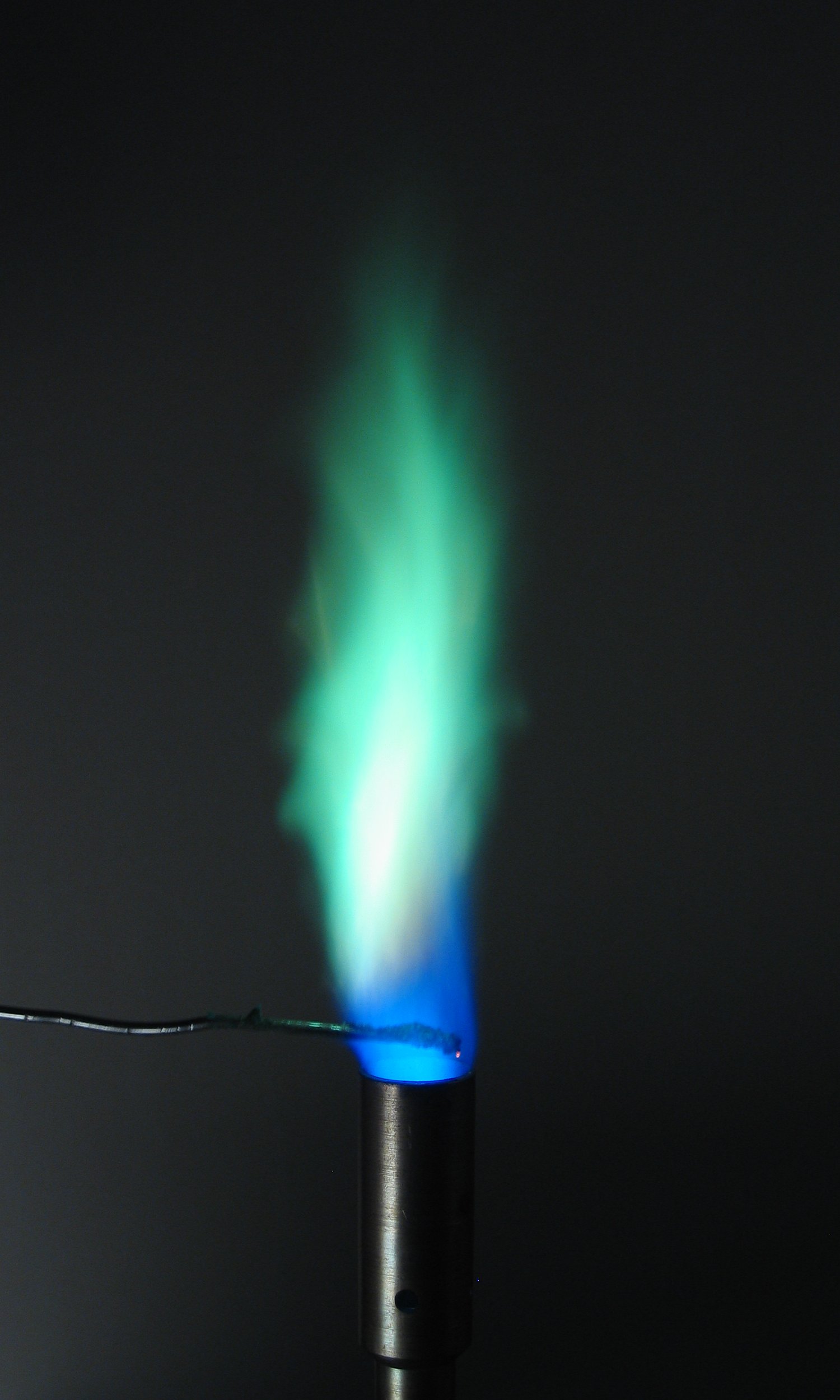 One of the key characteristics of fireworks are the vibrant colours that are produced when they explode. Fireworks depend on the chemical characteristics of elements to produce the specific colour needed. To create these colours, fireworks use the two main methods of colour production; incandescence with luminescence.
One of the key characteristics of fireworks are the vibrant colours that are produced when they explode. Fireworks depend on the chemical characteristics of elements to produce the specific colour needed. To create these colours, fireworks use the two main methods of colour production; incandescence with luminescence.Most fireworks use pyrotechnic composition to produce colours in fireworks. Pyrotechnic composition is a substance that produces heat, light, sound, gas or smoke resulting from an exothermic chemical reaction. When a specific type of metal is heated in a flame, it can produce a colour. For example: copper compounds over a flame can produce a green-blue glow. These natural chemical characteristics of elements are used to produce a specific colour. When the firework gets ignited and shot up, the reaction occurs and the colour producing chemical - which can come in different forms such as: metallic powers and metallic salts - produces the colour.
This is a chart that shows the colour of the firework and what typed of metallic compounds are used to make the specific colour.
Colour | Compound |
Red | strontium salts, lithium salts lithium carbonate, Li2CO3 = red strontium carbonate, SrCO3 = bright red |
Orange | calcium salts calcium chloride, CaCl2 calcium sulfate, CaSO4·xH2O, |
Gold | incandescence of iron (with carbon), charcoal, or lampblack |
Yellow | sodium compounds sodium nitrate, NaNO3 cryolite, Na3AlF6 |
ElectricWhite | white-hot metal, such as magnesium or aluminum barium oxide, BaO |
Green | barium compounds + chlorine producer barium chloride, BaCl+ = bright green |
Blue | copper compounds + chlorine producer copper acetoarsenite (Paris Green), Cu3As2O3Cu(C2H3O2)2 = blue copper (I) chloride, CuCl = turquoise blue |
Purple | mixture of strontium (red) and copper (blue) compounds |
Silver | burning aluminum, titanium, or magnesium powder or flakes |
No comments:
Post a Comment